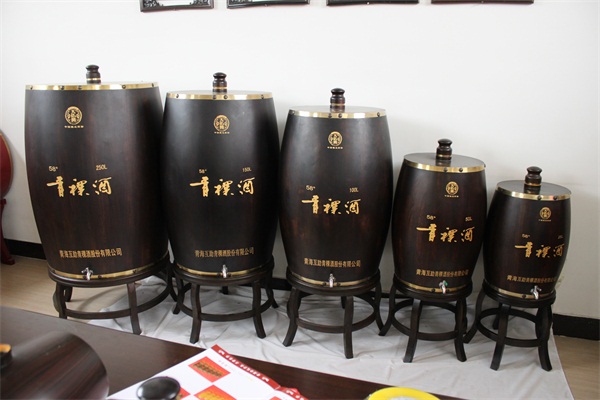一、氮的危害
1、 The harm of nitrogen
氮不能一概而論的歸結為有害氣體元素,因為有些特種不銹鋼是有目的的加入氮。所有的不銹鋼均含有氮,其存在量取決于不銹鋼的生產方法,合金元素的種類、數量及其加入方式,不銹鋼的澆鑄方法,以及是否有目的的加入氮。有些牌號的不銹不銹鋼,適當增加N的含量,可以減少Cr的使用量,Cr相對很貴,此方法可以有效降低成本。
Nitrogen can not be generalized as harmful gas elements, because some special stainless steel is purposefully added nitrogen. All stainless steels contain nitrogen, and its amount depends on the production method of stainless steel, the type, quantity and addition method of alloy elements, the casting method of stainless steel, and whether nitrogen is added purposefully. Some brands of stainless steel, properly increasing the content of N, can reduce the use of Cr, Cr is relatively expensive, this method can effectively reduce the cost.
不銹不銹鋼中的氮大部分是呈金屬氮化物的形態。例如:在存放一些時間后,不銹鋼發生應變時效,就不能被深沖加工(比如深沖加工為汽車保護板),因為不銹鋼會出現撕裂,不能沿各個方向被均勻地拉伸。這是由于晶粒大以及Fe4N沉積在晶粒界面上造成的。
Most of nitrogen in stainless steel is in the form of metal nitride. For example: after storage for some time, if the stainless steel has strain aging, it can not be processed by deep drawing (for example, deep drawing is processed as automobile protection plate), because the stainless steel will tear and cannot be evenly stretched in all directions. This is due to the large grain size and the deposition of Fe4N on the grain interface.
二、氫的危害
2、 Harm of hydrogen
當不銹鋼中氫含量大于2ppm時,氫在所謂“鱗片剝落”現象中起重要作用。在滾軋和鍛造后的冷卻過程中出現內裂和斷裂現象時,這種剝落現象一般更加明顯,而且在大的斷面或者高碳不銹鋼中更經常發現這種現象。

When the hydrogen content in stainless steel is more than 2ppm, hydrogen plays an important role in the so-called "flake off" phenomenon. The spalling phenomenon is more obvious in the cooling process after rolling and forging, especially in large section or high carbon stainless steel.
由于內應力的存在,這種缺陷會造成發動機使用過程中大轉子發生崩裂。鑄鐵中氫大于2ppm時,容易出現孔隙或一般的多孔性,這種氫造成的多孔性將造成鐵的脆化。“氫脆”主要出現在馬氏體不銹鋼中,在鐵氧體不銹鋼中不十分突出,而在奧氏體不銹鋼中實際上尚不清楚。另外,氫脆一般與硬度和含碳量一起增加。
Due to the existence of internal stress, this kind of defect will cause the large rotor to crack in the process of engine use. When the hydrogen content in cast iron is more than 2ppm, it is easy to have pores or general porosity, which will cause embrittlement of iron. Hydrogen embrittlement mainly occurs in martensitic stainless steel, which is not prominent in ferrite stainless steel, but is not clear in austenitic stainless steel. In addition, hydrogen embrittlement generally increases with hardness and carbon content.
三、氧的危害
3、 The harm of oxygen
氧和氫一樣,都會對不銹鋼的機械性能產生不良影響。不僅是氧的濃度,而且含氧的夾雜物的多少、類型及其分布等也有很重要的影響。這類夾雜物是指金屬氧化物、硅酸鹽、鋁酸鹽、含氧硫化物以及類似的夾雜化合物。煉不銹鋼需要脫氧,因為凝固期間,溶液中氧和碳反應會生成一氧化碳,可以造成氣泡。
The mechanical properties of stainless steel are the same as those of hydrogen and oxygen. It is not only the concentration of oxygen, but also the number, type and distribution of inclusions containing oxygen. This kind of inclusion refers to metal oxide, silicate, aluminate, oxysulfide and similar inclusion compounds. Deoxidation is necessary for stainless steel production, because during solidification, carbon monoxide will be generated from the reaction of oxygen and carbon in the solution, which can cause bubbles.
另外,冷卻時氧可以作為FeO、MnO以及其他氧化夾雜物從溶液中析出,從而削弱其熱加工或冷加工性,以及延展性、韌性、疲勞強度和不銹鋼的械加工性能。氧與氮和碳還能引起老化或者硬度在室溫下自發的增加。對于鑄鐵,當鑄塊正凝固時,氧化物與碳可以發生反應,因此造成產品的孔隙和產品的脆化。
In addition, oxygen can be precipitated from the solution as FeO, MnO and other oxide inclusions during cooling, which weakens the hot or cold workability, ductility, toughness, fatigue strength and machinability of stainless steel. Oxygen, nitrogen and carbon can also cause aging or spontaneous increase in hardness at room temperature. For cast iron, when the ingot is solidifying, the oxide can react with carbon, resulting in porosity and embrittlement of the product.

 自動售酒機 2024-07-25
自動售酒機 2024-07-25  不銹鋼酒桶:關于酒桶你需要知道的一切 2024-07-19
不銹鋼酒桶:關于酒桶你需要知道的一切 2024-07-19  不銹鋼釀酒桶大解析! 2024-07-13
不銹鋼釀酒桶大解析! 2024-07-13  不銹鋼酒罐的產品概述及特點 2024-06-13
不銹鋼酒罐的產品概述及特點 2024-06-13  大型釀酒設備有哪些組成? 2024-06-10
大型釀酒設備有哪些組成? 2024-06-10  自動售酒機的產品特點 2024-06-07
自動售酒機的產品特點 2024-06-07  白酒釀酒設備知識介紹 2024-06-04
白酒釀酒設備知識介紹 2024-06-04  全自動涼茬機的使用故障有哪些? 2024-05-24
全自動涼茬機的使用故障有哪些? 2024-05-24  不銹鋼內膽實木酒桶:木酒桶如何儲存葡萄酒? 2024-05-23
不銹鋼內膽實木酒桶:木酒桶如何儲存葡萄酒? 2024-05-23  自動售酒機有哪些功能 2024-05-22
自動售酒機有哪些功能 2024-05-22  全自動涼茬機的工藝流程以及組成 2024-05-21
全自動涼茬機的工藝流程以及組成 2024-05-21  不銹鋼內膽實木酒桶:不銹鋼材質的優勢 2024-05-20
不銹鋼內膽實木酒桶:不銹鋼材質的優勢 2024-05-20